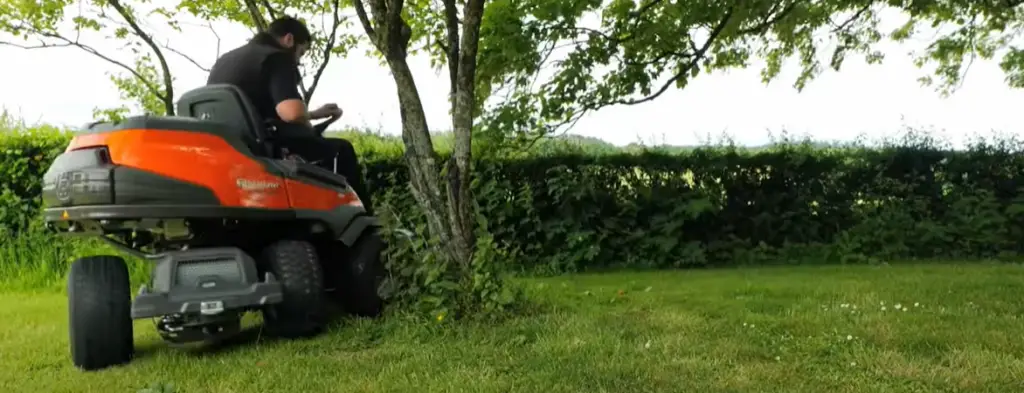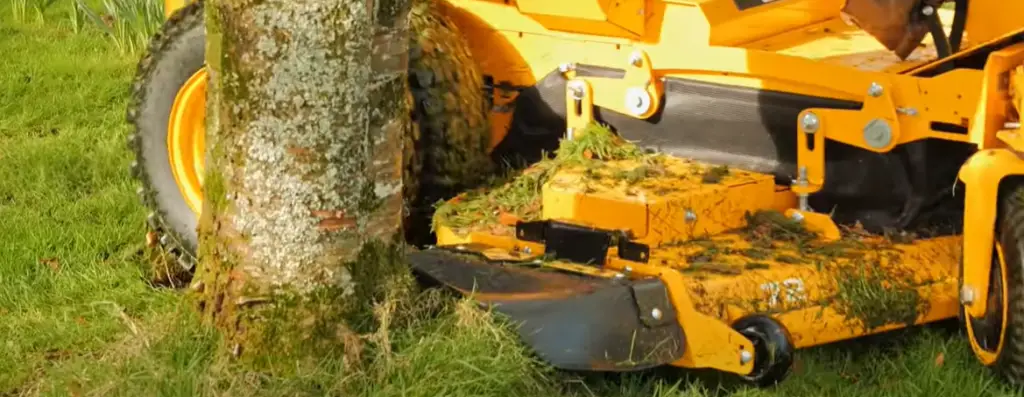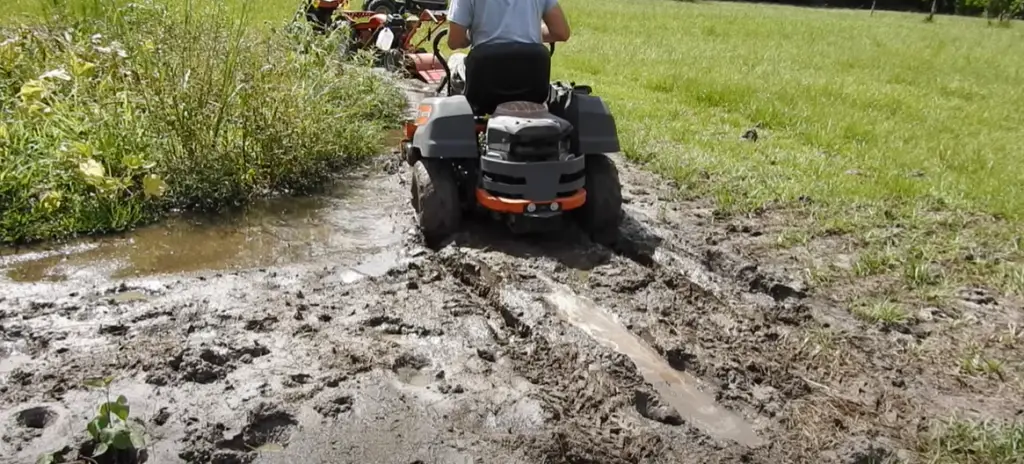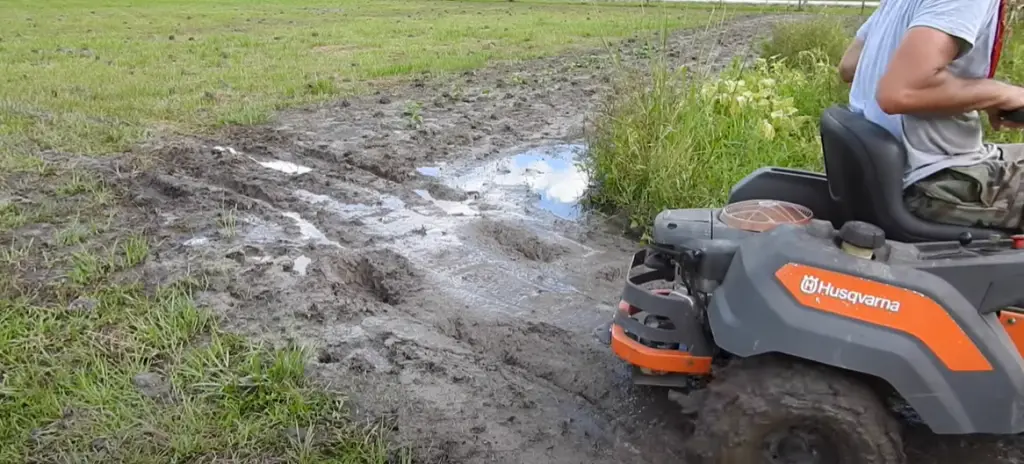If you’re like most homeowners, you probably have a lawn mower. And if you’re like most homeowners, you’ve probably given some thought to whether or not you should upgrade to a zero-turn mower. But which is better for you: a riding mower or a zero-turn? This blog post will compare the two and help you decide which one is right for your needs.
What are Zero-Turn Mowers?
Zero-turn mowers are advanced and efficient lawnmowers designed to provide superior maneuverability and control. They feature a zero-degree turning radius, meaning they can pivot in place without skidding or needing to back up. This makes them ideal for navigating tight spaces or trimming around obstacles like trees, gardens, and landscaping features. The cutting decks of zero-turn mowers are typically larger than those of traditional walk-behind mowers, allowing for more efficient coverage with fewer passes.
Zero Turn Mowers offer several advantages over traditional mowers. They are more maneuverable and can cover large areas with fewer passes, allowing for less time spent mowing the lawn. Additionally, the zero-turn design helps to reduce wear and tear on your grass, as you won’t have to worry about skidding or steering tires that might otherwise cause damage. Finally, zero-turn mowers come in a variety of sizes so you can find one that fits both your yard size and budget [1].

What are Riding Mowers?
Riding mowers are a type of lawnmower designed to make the job of cutting grass easier and faster. They are usually larger than traditional push mowers and have an engine, three or more wheels, and a seat for the operator. Riding mowers can come in either electric or gas-powered models, depending on your preference. Some riding mowers even feature attachments like snow blowers, spreaders, dump carts, and aerators for added convenience.
Riding mowers are ideal for large lawns or yards that require frequent maintenance throughout the year. By utilizing a riding mower instead of a traditional push mower, you can save time and energy while finishing your yard work faster. Not only will it help you get your grass cut quickly, it will also provide a smoother and more even cut.
Riding mowers come in several different types that are designed to fit different needs. There are garden tractors, lawn tractors, and utility vehicles. Garden tractors have the most power out of all the other types and usually feature large rear wheels for extra traction on rough terrain.
Lawn tractors are lightweight and great for smaller yards with few obstacles. Lastly, utility vehicles make for an easy way to transport items around the yard without having to haul them by hand.
Pros of Riding Mowers/Lawn Tractors
Riding Mowers/Tractor Mowers Take Little Effort to Use
Riding mowers require less effort than a standard push mower and are much more efficient for larger areas. The user does not have to constantly bend over like with a traditional push mower, making it easier on your back. Many models also feature steering wheels which allow you to maneuver around obstacles quickly and easily.
They Are Low-Maintenance
Unlike many other types of lawn care equipment, riding mowers/lawn tractors require little maintenance over time. Most models come with easy-to-follow instructions on how to keep them running optimally, as well as troubleshooting information should something go wrong. This means that all you need to do is ensure the gas tank stays full, the blades stay sharpened and periodically check for any loose parts.

Small to Medium Cutting Deck Options
Riding mowers/lawn tractors come in a variety of cutting deck options, from small to medium-sized. The smaller decks are ideal for home landscapes that don’t require a lot of area coverage. On the other hand, the larger decks can cover more ground and make mowing large areas much simpler.
Ease of Transportation
Most riding mowers/lawn tractors can be easily transported as they are designed with transportation in mind. Many models feature handles or wheels that allow you to maneuver them into tight spaces such as garages or sheds. Additionally, many feature removable parts which make it easier to transport over long distances without damaging any components.
Mulching Options Available
Many riding mower/lawn tractor models come with mulching capabilities, meaning you can mulch grass clippings and other debris as you mow. This saves time and effort by eliminating the need to collect and dispose of the clippings. Not to mention, it also helps fertilize your lawn naturally as you go.
Medium-Speed Cutting
Riding mowers/lawn tractors typically operate at a medium speed, making them ideal for larger areas where you want to cover ground quickly. This is especially helpful when mowing over uneven terrain as it allows you to move the machine more smoothly than with a traditional push mower.
Safety Features Available
Many riding mower/lawn tractor models come with additional safety features such as rollover protection systems and seat belts. This helps prevent accidents and keeps the operator safe while operating the machine. Additionally, most models have adjustable cutting heights which allow you to adjust the blade height depending on what type of grass or terrain you are cutting.
Ideal for Small to Medium Lawns
Riding mowers/lawn tractors are ideal for small to medium-sized lawns as they can cover more area in less time than a traditional push mower. Additionally, the maneuverability of these machines makes them perfect for navigating tight spots and tackling difficult terrain. Plus, with the various cutting deck sizes available, you can find just the right size to match your specific needs.
Traditional Steering Method
Unlike a zero-turn mower, riding mowers/lawn tractors typically use the traditional steering method. This makes them easier to operate as you don’t have to worry about mastering the nuances of controlling a zero-turn machine. In addition, they are usually more affordable than their zero-turn counterparts.

Large Collection Options
Riding mowers/lawn tractors come in a variety of different sizes and styles, so you can find one that best fits your needs. From small decks for smaller yards to larger decks for larger landscapes, there are many options to choose from. Additionally, the various models come with different features such as adjustable cutting heights and mulching capabilities.
Attachment Options
The majority of riding mower/lawn tractor models also come with the ability to attach add-ons such as aerators, spreaders, and more. This allows you to customize your machine to suit your specific needs, whether it’s for lawn care, landscaping, or even snow removal.
Pros of Zero Turn Mowers
Medium to Large Cutting Deck Options
Zero-turn mowers come with a wide variety of cutting deck sizes, from small to large. This makes them suitable for homeowners who have medium-sized or larger lawns that need more coverage than what a push mower can provide. Zero-turn mowers are ideal for quickly and easily navigating around obstacles in your yard, such as trees and flower beds. The width of the cutting deck also helps ensure you get a precise cut without leaving strips of uncut grass behind.
High Cutting Speeds
The ability to make tight turns allows zero-turn mowers to cover ground much faster than traditional riding mowers. Since they don’t require you to drive back and forth continuously, you can finish your lawn more quickly with less effort.
Easy Maneuverability
Since zero-turn mowers are capable of making complete 180-degree turns, you can easily maneuver them around tight spaces and other obstacles in your yard. This makes them ideal for navigating narrow pathways, flower beds, and trees without any issues. Plus, you won’t have to worry about getting stuck or backing up constantly like with a traditional riding mower.
Superior Control
Operating a zero-turn mower is surprisingly easy. With two separate control levers allowing for independent wheel movement, you always have full control over how the machine moves through the yard. This gives you more precision when it comes to cutting along edges and around curves, preventing missed spots and lopsided cuts.
Less Stress on Your Body
Since you don’t have to push or pull a zero-turn mower like a traditional lawnmower, it puts less stress on your body. This makes them ideal for those who may not be able to handle the physical strain of using a regular push mower. Plus, the cushioned seat and adjustable height make the ride more comfortable while reducing fatigue. This can help you get more done in less time with fewer aches and pains.
Ideal for Medium to Large Lawns
Zero-turn mowers offer higher cutting speeds, superior control, and maneuverability when compared to traditional riding mowers. This makes them ideal for homeowners with medium to large lawns who want a machine that can cover more ground quickly and efficiently. With the ability to turn on a dime, they can easily navigate tight spaces while ensuring you get an even cut each time. Additionally, they are built with durability in mind so you know you’re getting a product that will last for years to come.
Zero Degree Turning Radius
A zero-degree turning radius means the mower’s wheels will turn in a full circle and remain in the same spot while doing so. This makes it easy to make tight turns without having to move the mower forward or backward. Additionally, it allows you to get up close to obstacles like flower beds and fences for more precise trimming [2].

What to look for in both mowers?
Deck Size
The deck size of a lawn mower is important because the larger it is, the more cutting power it has. Gas-powered mowers tend to have larger decks than electric mowers, but this isn’t always the case. Pay attention to the measurements for both types of mowers so you know what size yard they can handle.
Engine
Gas-powered mowers generally come with either two- or four-stroke engines. Two-strokes are lighter and produce less noise but require more maintenance as they need frequent oil changes. Four-stroke engines provide better fuel efficiency and cleaner emissions but may be heavier and noisier. Electric mowers are typically quieter than gas ones, though some models may still be loud enough to annoy your neighbors.
Maneuverability
The maneuverability of a mower is important if you have a lot of obstacles in your yard. Maneuverable mowers typically have smaller cutting decks, so they can fit into tight spaces and around trees and plants. For larger yards, look for mowers that come with the option of adding caster wheels to make them easier to push. Additionally, some gas-powered models may be able to add an optional wheel kit so you can pull it instead of pushing it.
Cutting options
If you want precision cutting in your lawn, look for a mower that comes with adjustable height settings or mulching blades. This will allow you to tailor the cut and create different looks in your yard. For bigger yards, look for mowers with bagging systems so you can collect the grass clippings and compost them.
Price/Guarantee/Warranty
When it comes to mowers, you generally get what you pay for. But even if you have a tight budget, there are still some good options out there. Look for warranties and guarantees that come with the mower so you know it’s covered in case something goes wrong. Additionally, make sure to factor in the cost of any accessories or extra parts you may need over time.
Safety Features
Both gas and electric mowers come with safety features, such as blade guards and other protective accessories. Be sure to read up on any included safety features so you know how to properly operate the machine. Additionally, look for models that come with extra comfort features like ergonomic handles and adjustable speeds.
Additional Features
Finally, take a look at some of the additional features offered by both types of mowers. For example, some models may have headlights or built-in speakers so you can listen to music while you work in your yard. Other extras may include cruise control, Bluetooth compatibility, and even app integration. All of these features can make lawn care easier and more enjoyable.

FAQ
What are the disadvantages of a zero-turn lawn mower?
A zero-turn mower has several notable disadvantages. Firstly, they are more expensive than traditional riding mowers and require a greater initial investment. Additionally, these mowers can take up more space in your garage or shed due to their turning radius. Finally, some people find them difficult to control and maneuver, especially on uneven terrain or hillsides. For novice users of zero-turn mowers, it is recommended that they get plenty of practice before taking on more complex tasks with the machine. Additionally, you may need to purchase additional attachments such as mulching kits or baggers for collection since many models do not come with these features included.
Why are zero-turn mowers better?
Zero-turn mowers are better because they provide the user with unmatched maneuverability and control. With a traditional riding lawn mower, turning is slow and awkward due to its front-wheel drive system, while a zero-turn can turn on a dime due to its rear-wheel steering. Additionally, these machines cut grass faster than traditional models as you can make tight turns around obstacles with ease. Finally, many of these mowers come with additional features such as mulching kits or baggers that help you to collect clippings more efficiently. For any homeowner looking for an efficient way to keep their yard tidy, a zero-turn mower is an excellent option.
Do zero turns cut better?
Yes, zero-turn mowers do cut better than traditional riding mowers. This is because the zero-turn rear-wheel steering system and two independent drive systems allow it to make tight turns around obstacles quickly and efficiently. The result is clean, even cut, which is difficult to achieve with a conventional mower. Additionally, these machines are also capable of cutting grass at much faster speeds compared to traditional models, making them ideal for larger yards or landscaping tasks. With regular maintenance and sharp blades, you can ensure your zero-turn lawn mower will continue providing top-notch results season after season.
Are zero-turn mowers hard to use?
Zero-turn mowers are not particularly difficult to use, however they do require a bit of practice and skill. Novice users should take some time to become familiar with the machine’s controls and get comfortable maneuvering it before attempting complex tasks such as mowing hillsides or navigating tight turns. Additionally, since these machines feature two separate drive systems, they can be more difficult to control than traditional riding lawnmowers. It is recommended that you read the instruction manual thoroughly before use to ensure safety and proper operation at all times. With practice, novice users will find zero-turn mowers are an excellent tool for maintaining their lawns in top condition.
What type of mower is best for hills?
Zero-turn mowers are the best type of mower for hills, as their rear-wheel steering system and independent drive systems allow them to navigate tight turns and slopes with ease. Traditional riding lawn mowers can struggle to turn on a hill due to their front-wheel design, making them difficult to use in hilly terrain. Additionally, some zero-turn models come with features such as mulching kits or baggers that help collect clippings more efficiently. For any homeowner looking for an efficient way to take care of their yard on hilly terrain, a zero-turn mower is an excellent option.
Will rain hurt a zero-turn mower?
No, rain should not harm a zero-turn mower if it is properly maintained and serviced. However, it is important to make sure that any water or debris is removed from the machine after each use to prevent rust or corrosion. Additionally, you should ensure that all oil and fuel levels are checked before each use to protect the engine from damage due to wet conditions. It is also recommended that you store the mower indoors or in a covered area when not in use to keep it safe from inclement weather.

What is the average life of a zero-turn mower?
The average life of a zero-turn mower is 8 to 10 years if it is properly maintained and serviced. Regularly checking the oil, fuel, blades, tires, and other components of the machine can help extend its life significantly. Additionally, storing the mower indoors or in a covered area when not in use will help protect it from inclement weather and extend its life even further. With regular maintenance and care, you can ensure your zero-turn lawn mower will last for many seasons of use.
Is it OK to cut wet grass with a zero-turn mower?
No, it is not recommended to cut wet grass with a zero-turn mower. Wet grass can clog the machine or cause damage to its components due to excess moisture. Additionally, wet conditions can reduce the effectiveness of the blades, resulting in an uneven and unsatisfactory cut. It is best to wait for the lawn to dry before using your zero-turn mower for optimal results. Overall, zero-turn mowers are an excellent tool for maintaining yards and landscaping tasks that involve hills and tight turns. With regular maintenance and proper care, you can ensure your machine will provide top-notch results season after season.
What time is best to cut grass?
The best time to cut grass is in the early morning when the dew has dried and temperatures are cooler. This will help prevent overheating of the engine and blades due to direct sunlight. Additionally, it is recommended that you mow lawns in a different direction each time to avoid compaction of the soil and promote even growth. Mowing too frequently can also be detrimental to your grass, so it is important to find a schedule that works for your lawn’s specific needs. With proper care and maintenance, you can ensure healthy results from your zero-turn mower all season long.
Useful Video: Should I Buy a Zero Turn or Lawn Tractor?
Conclusion
Zero-turn and riding mower lawn tractors are both great options for maintaining a healthy lawn, but they each have their benefits and drawbacks. The zero-turn mower is the faster of the two, making it an ideal choice for larger properties where time efficiency is important. On the other hand, riding mowers are more comfortable and provide superior maneuverability on small lawns or difficult terrain. Ultimately, the decision between these two types of lawn tractors should be made based on your lawn size and budget. Both will make short work of any job and save you time in the process!
References:
- https://www.centurypwrequipment.com/research-zeroturn-vs-riding-mower
- https://www.bobbyfordkubota.com/zero-turn-vs-riding-mower-lawn-tractor-pros-cons/










Leave a Reply
View Comments